As the name suggests Panch Prayag refers to the five confluence points of the holy rivers in the Garhwal region of Uttarakhand. The word Prayag litera
As the name suggests Panch Prayag refers to the five confluence points of the holy rivers in the Garhwal region of Uttarakhand. The word Prayag literally translates into ‘a place of sacrifice’, and taking up this Yatra of these 5 confluence points is considered to be extremely holy. Making its way through the lush green and jagged mountains these amalgamation points are worshipped by devotees and people from far and wide visit this place to take a holy dip in its holy waters. Descending gracefully from the Himalayas this river is also used as a place to immerse the ashes of the deceased. Not only are these points of worship extremely pious and holy but they also offer some of the most incredible views of the surrounding Himalayan beauty.
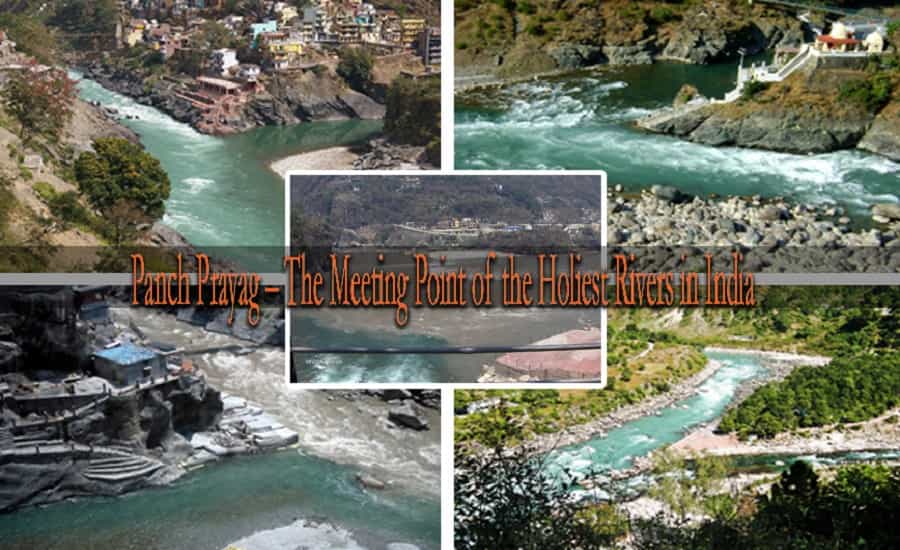
About Panch Prayag
Legend of Panch Prayag:
As per legends when the holy river of Ganga was descending on earth, it was predicted that the earth won’t be able to contain its immense force and weight. Keeping this in mind, Lord Shiva divided the river into various different streams. This can be observed from the fact that after going through 5 different and major confluences the river once again becomes complete and makes its way down the hills forming one river of Ganga.
Given below are the Prayags according to their descending order from the Himalayas:
1. Vishnuprayag
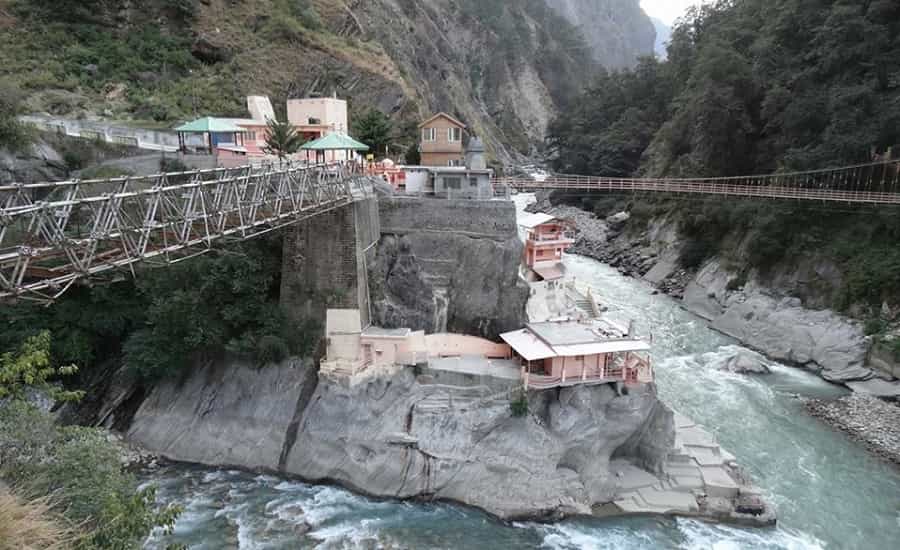
As the name suggests this place is named after Lord Vishnu and this is the point where the gleaming waters of Satopanth and Bhagirath Kharak glacier converge and form the holy river of Alaknanda. This river makes its way from the banks of one of the holiest Lord Vishnu temples in India i.e. Badrinath Dham. Vishnuprayag marks the point where the river of Dhauliganga coming down from Niti valley meets the river of Alaknanda or Vishnu Ganga. This confluence takes place on an elevation of 1,372 metres above sea level close to the holy pilgrim town of Joshimath in the district of Chamoli and is located at a comfortable distance of 38 kms from Badrinath Dham.
Legend – According to the holy Hindu scripture, this holy confluence point of the rivers is the place where Sage Narad performed intense meditation in order to please Lord Vishnu. Located close to this point is an old Lord Vishnu temple that was constructed by the queen of Indore, Ahilyabai during 1889. This octagonal shaped, unique temple initially used to house a holy Shiv Linga but was then replaced by an idol of Lord Vishnu. This union of rivers may seem gentle to look at but taking a dip in its waters is a difficult process because of the strong under currents of the river.
2. Nandprayag
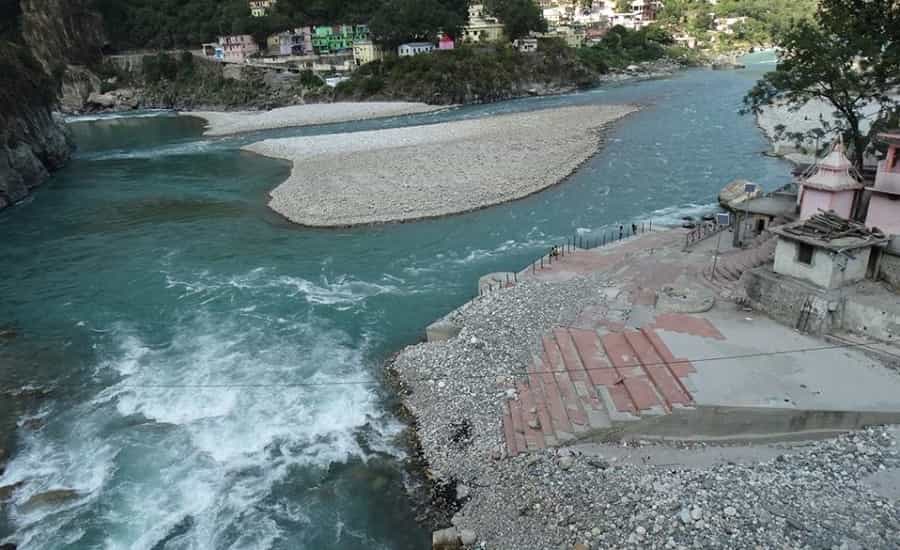
This confluence point of the rivers of Alaknanda and Nandakini rivers takes place on an elevation of 1,358 metres above sea level in the district of Chamoli. This amalgamation of rivers is situated at a distance of 22 kms from Karnaprayag and approximately at a distance of 194 kms from the holy town of Rishikesh. According to a popular belief, Nandprayag got its name from the Yadava king, Nanda who was a devout follower and worshipper of Lord Vishnu. This dedication for the lord pleased Vishnu and he granted him the boon of having a son like the lord himself. He also got the rare opportunity to raise Lord Krishna (an incarnation of Lord Vishnu) as his foster father.
Legend –The holy temple of Gopalji or Lord Krishna is established in close proximity to the confluence of Nandprayag. It is also a popular belief that the wedding of King Dushyant took place with Shakuntala. The entire region that falls in between Satopanth and Nandprayag is known as Badri – Kshetra, where the holy and ancient temple of Badrinath along with a number of other temples are located and Nandprayag is believed to be the gateway to this place.
3. Karnaprayag
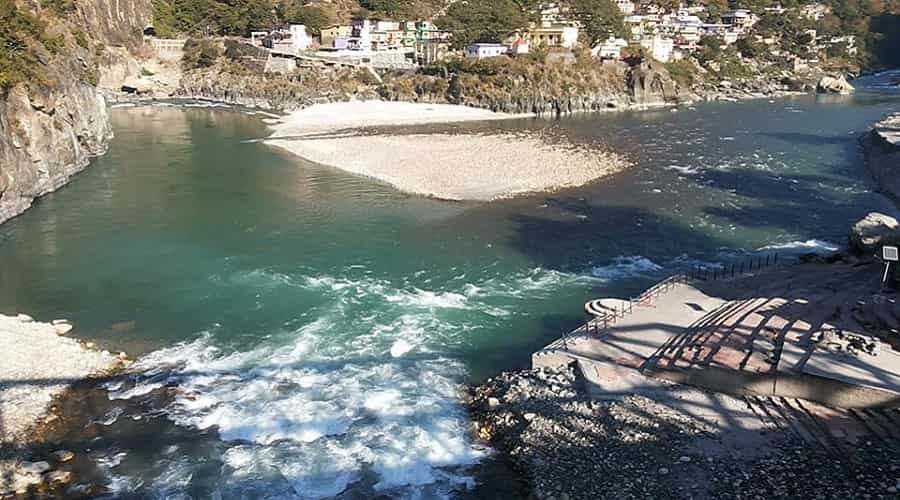
Karnaprayag marks the point of confluence of the river of Pindar that descends down from Pindari glacier and amalgamates with the river of Alaknanda. This point is situated at a distance of 174 kms from Rishikesh and is named after Karna the brave warrior as mentioned in the Hindu epic of Mahabharata. This place is an incredibly holy site since according to the Holy Scriptures this is the spot where Karna performed serious and intense penance to his father, surya dev or the sun god and attained his famous Kavacha (armour) and Kundal (earrings).
Legend – As per popular mythological beliefs, this is also the place where Lord Krishna had performed the last and final rites for Karna after his death. According to the famous poet Kalidasa’s Abhijnana (Abhigyan) Shakuntalam – this was the place where the love affair between Dushyant and Shakuntala had bloomed. Attracted by the beauty this place has to display; Swami Vivekananda also had meditated and spent 18 whole days here. There are several shrines that line the Ghats like the temple of Uma Devi (daughter of Himalayas) as well as of Karna.
4. Rudraprayag
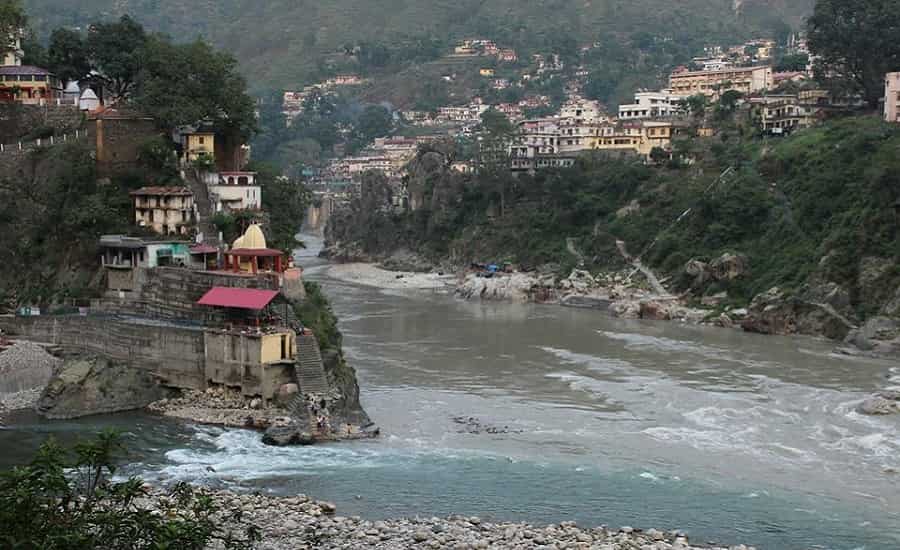
As the name suggests this confluence of the rivers of Mandakini and Alaknanda is dedicated to Lord Shiva who is also known as Rudra. This is done so since a number of legends and mythological accounts at this place are related to Lord Shiva. Located at a distance for almost 142 kms away from Rishikesh, Rudraprayag is replete with incredible accounts and historical mentions about Lord Shiva’s at this place. This place also serves a popular pilgrim stoppage point for people on their way to Kedarnath Dham which is situated at a distance of 86 kms.
Legend – A widely accepted belief is that Lord Shiva had once performed Tandav at this place. Another legend tells us the story of how Sage Narad was incredibly impressed by his Veena playing abilities and he played his musical instrument and prayed to Lord Shiva for years and years in order to persuade him and ask him to become his disciple. A black statue which is known popularly as Narad Shila here is believed to be the place where Narad used to sit and pray to the lord. There are several old and ancient temples that line the Ghats like the temples of Rudranath and Chamunda Devi which houses steep stairs that lead down to the convergence point.
5. Devprayag
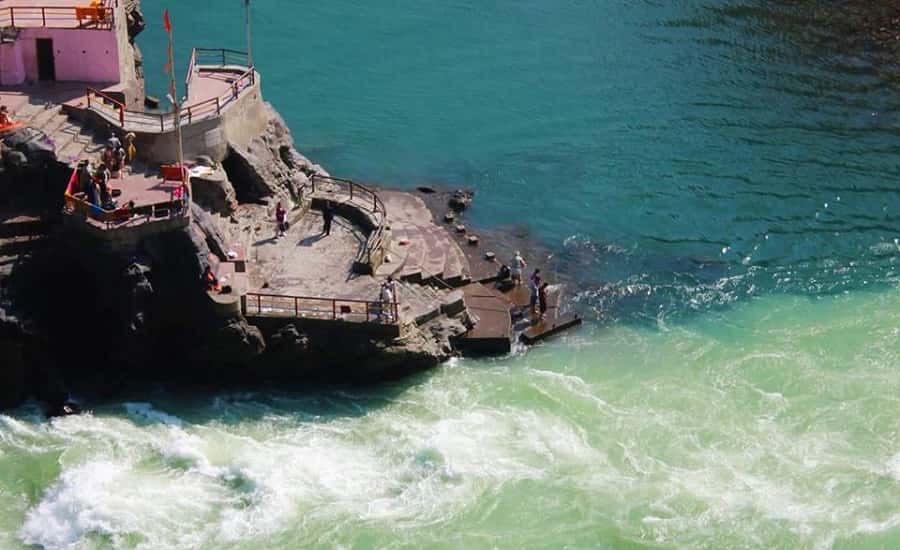
This is the final point of confluence of the Panch Prayag Yatra where the rivers of Alaknanda and Bhagirathi meet and form the holy river of Ganga which then flows on to the rest of the country. This convergence takes place on the district of Tehri Garhwal and is one of the most holy Prayags in the entire Yatra journey. This is truly a scenic sight since both the rivers display brilliant hues of green and blue during the confluence. Located at a distance of just 73 kms from Rishikesh the Yatra for Panch Prayag can easily be paired up with the Chota Char Dham Yatra of Uttarakhand.
Legend – One of the 108 Divya Desams is located on the Ghat which is the ancient temple of Raghunath. It is a popular belief that Lord Laxman and Lord Ram performed intense penance there as a way of showing their guilt for Brahmahatya of Ravana who was Brahman. Another interesting place at the ghats is an astronomical observatory which was constructed by late Acharya Pt. Chakradhar Joshi which was an astronomer and a great astrologer and this place holds an incredible collection of ancient manuscripts with the earliest manuscript dating back to as far as 1677 AD.
Accessibility
The Panch Prayag can be witnessed by starting your journey from Rishikesh which is known for being the gateway to the Garhwal Himalayas and by following the Rishikesh – Badrinath highway. The railhead situated in Rishikesh is connected to almost all the major and minor railway stations in India from here people can choose to hire a cab, shared taxi or hail a bus service to the confluence points.
Here are the distances of the five Prayags from Rishikesh:
- Rishikesh to Vishnuprayag – 256 km via Joshimath
- Rishikesh to Nandprayag – 190 km
- Rishikesh to Karnaprayag – 169 km
- Rishikesh to Rudraprayag – 140 km
- Rishikesh to Devprayag – 70 km
Best Time to Visit:
All the five confluence points of the river experiences low temperatures throughout the year. It is not advisable for you to visit Panch Prayag during the winter months since you will be treated with extremely cold and frigid temperatures making your Yatra journey extremely difficult and uncomfortable. However, all the Prayag sites are accessible throughout the year via a road journey. Even if you are making a Yatra journey during the summer months still you will be required to carry some light woolen and warm winter wear since you will be treated with cold winds throughout your entire journey.
Path of Panch Prayag
The Panch Prayag Yatra commences from Vishnu Prayag right on the river of Alaknanda that is one of the 2 streams of river Ganga while the other streams are known as Dhauliganga, Mandakini, Pindar and Bhagirathi which are the headstreams of the holy river of Ganga. Alaknanda River makes its way down from the triangular lake of Satopanth (at a height of 4,402 metres above sea level) while the Bhagirathi river gushes down the Bhagirath Kharak Glacier which is situated in close proximity to the peak of Nanda Devi and covers an overall length of 229 kms across the 5 Prayags.
Panch Prayag Relevance
Each confluence of the river experiences a massive turnout of pilgrims from far and wide who go on their Panch Kedar Yatra or the Sapta Badri Yatra. All the towns that are around these confluence points are named after the holy convergence, except the holy town of Vishnuprayag and pilgrims make it a point to take a dip in the water. Some devotees and pilgrims also make it a point to take a dip in the waters of all the five Prayags and get rid of all their sins before visiting the holy Dham of Badrinath. Some people also perform the act of immersing the ashes of the deceased individuals here as a part of their Shradh Puja ritual since it a popular belief that the souls of the deceased will only be able to achieve their salvation after their ashes are immersed in this holy water.


COMMENTS